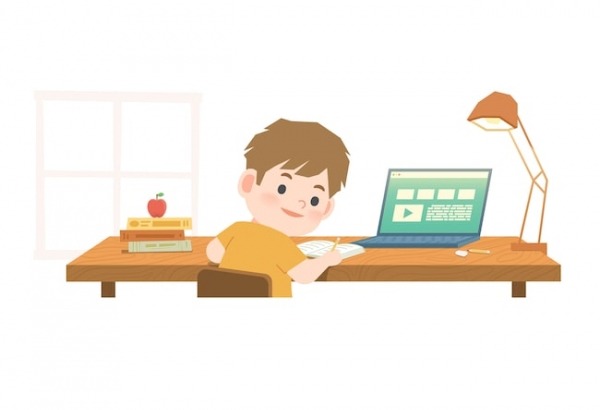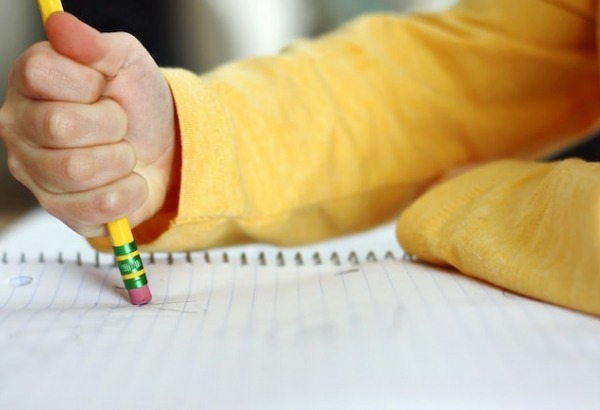Specialist dyslexia schools or public school - which is best?

Many parents who have just found out their child has dyslexia ask an important question – should my child continue to attend a mainstream school or is it better to send him or her to a school that specializes in teaching students with specific learning difficulties. The first thing to be clear on is there is no right or wrong answer. That’s because no two children with dyslexia will struggle in exactly the same way and what works for one individual will not necessarily work for another.
The same goes for families who often have very practical concerns when it comes to choosing a school, particularly with regard to location and cost. It’s important to consider recommendations made by the specialist involved in the diagnostic testing, the experience your child has had at his or her current school, what the school plans to do in order to help the child achieve his or her Individual Educational Plan (IEP), and what you are prepared to do at home to help.
You’ll also want to fully explore the differences between mainstream schools and institutions that focus primarily on teaching children with specific learning differences.
A specialist school where all of the learners have dyslexia will most likely offer smaller class sizes, in addition to 1:1 tuition. Instead of providing specialized assistance as an add-on at the start or end of the school day, a dyslexia-friendly approach will be integrated with your child’s classroom learning across subjects. Teaching staff may be more qualified and better prepared to work with students who have a range of learning difficulties - this is particularly important given dyslexia can co-present with dyspraxia, dysgraphia, attention difficulties and slow processing.
The curriculum and approach may also be more flexible, to accommodate different learning styles, and there will often be a range of tools available, including hardware and software, to provide children with different options that can support their learning.
One of the biggest differences between a mainstream and specialist dyslexia school is in the make-up of the student body. In a school where most of the children have learning differences, your child is less likely to feel out of place. Dyslexia is a specific learning difference that can affect an individual’s ability to break spoken language down into its component sounds, which in turn affects reading and spelling skills.
However, it is not related to intelligence. Kids with dyslexia can be extremely bright, creative and out-of-the-box thinkers, but because of lagging literacy skills development, they may be placed in the lower-set in a mainstream school. This can be de-motivating and prevent progress but it can also cause social issues, anxiety and low self-esteem. A child may feel there is something wrong with him or her, whereas in reality he or she simply learns in a different way.
That being said, there are plenty of inclusive mainstream schools that offer excellent accommodations for learners with dyslexia, and if your child already has friends at his or her current school and doesn’t want to leave, there is no reason why you should automatically consider a move, even if you have the option to do so. Moreover, there’s a lot that can be done at home to assist a child with dyslexia in keeping up and making the most out of the accommodations provided.
Have a read through these articles to learn more: how to help students with dyslexia in the school classroom, fluency strategies for struggling readers, spelling strategies for dyslexia, classroom accommodations for dyslexia, encouraging children with specific learning differences at school and strengths associated with dyslexia
Dyslexia at school
The goal for any school program that aims to support a child with dyslexia is to set him or her up for success. This includes teaching coping strategies and providing accommodations to assist with learning difficulties, but also recognizing a student’s talents and providing opportunities to develop them. Dyslexia can range in severity and may affect a student in different ways.
That’s why SEN coordinators, teachers and parents will benefit from having access to a diagnostic testing report that provides a full picture of the child’s strengths and weaknesses. Testing might be done by the school or a private education psychologist. Learn more about testing for dyslexia.
Is dyslexia a disability?
You can learn a lot about a school’s approach to learning differences by the language the school uses when raising awareness among staff and students, and in public forums.
While in the United States it is still common to hear dyslexia labeled a learning disability, the schools and government agencies in the UK have adopted the terms learning difficulty and learning difference, which have slightly different meanings. A disability implies a person is less able than his or her peers, a learning difficulty suggests there are challenges that can be overcome, and a specific learning difference simply describes the child as non-neurotypical. Learn more in this article on learning difficulties.

What to consider when looking for a school
Teacher qualifications
Dyslexic students can be extremely clever but may have difficulties with decoding, copying, concentrating, and holding information in short-term memory. This can make school a challenge and means they often require a dyslexia-friendly approach to instruction. It helps when a member of staff is trained in dyslexia remediation, and able to empathize and adjust lesson delivery accordingly. This might mean printing handouts in a dyslexia-friendly font, not on white paper, or even emailing assignments and reading materials directly to the child’s laptop. It is likely to include knowing not to put a child on the spot when it comes to reading out loud in front of the class or making them take a turn at writing on the board.
Teacher training
Not every teacher has trained to work with learners who have dyslexia. Do non-specialist teachers get any support from the school for teaching students who are dyslexic? There’s also an aspect of on-going training which is important to ensure teachers are aware of new resources and stay up-to-date on the latest research findings and their implications for classroom learning. In the UK there’s a specialist qualification that can be acquired from the British Dyslexia Association, and it has been known for local dyslexia associations to sometimes subsidize the cost of this specialist training if they are able to do so.
Class size
In a school with large classes, where not every child struggles with a learning difference, it may be easier for a student to fade into the background in order to call less attention to any perceived deficiencies in skills. Also, the larger the class size, the harder it is for teachers to diversify lessons and deliver information in a way that suits learners with different needs.
TOP TIP: Did you know in the UK teachers are called upon to make “reasonable adjustments” for students with learning difficulties? Instead of requiring the student to take notes the teacher might provide them, or the student might be entitled to use a recording device in class.
Assessment policy
A child with dyslexia may understand a topic well and be able to deliver an excellent oral report, yet this same knowledge will not necessarily come across in a written essay. Will your child be evaluated in a way that allows him or her to show acquired knowledge? If you have an assessment that your child is dyslexic, under certain circumstances it’s possible for work to be submitted as an audio recording. If a child must take a standardized school exam, will time limits be extended and can written responses be completed using a word processor on the computer? If appropriate, the student may be able to dictate answers to a scribe.
Top Tip: It’s often easier for students with dyslexia to type vs. handwrite work. Learning how to touch-type with a dyslexia-friendly course like Touch-type Read and Spell can improve your child’s spelling, and reading fluency thanks to a program of phonics that guides the words in typing exercises. Learn more about the benefits of typing for dyslexics.
Approach to marking
How will written work be marked? Excessive red marks on a page can be both demotivating and ineffective and can cause a child to dislike writing and develop negative associations with school and learning.
Flexibility
Students with learning difficulties may need to proceed at their own pace, repeating and reviewing material until they are ready to move on. This can sometimes be described as “over-learning” until something is embedded in long-term memory. At the same time, gifted learners who also have dyslexia can benefit from the opportunity to move on and explore areas of interest. How rigid is the school curriculum? Do teachers recognize that the student may have good and bad days and that coping with schoolwork may make the student more tired than his or her peers?
Inclusivity
How many of the other students at the school struggle with a learning difference? Where a child falls in a classroom can have a significant impact on confidence and self-esteem. It can help a child fit in and feel less self-conscious to know they are in a group of peers. It may also be easier for them to make friends.

Approaches to literacy instruction
Research has shown that multi-sensory and kinesthetic approaches to learning, such as Orton-Gillingham, can help children and adults when it comes to acquiring literacy skills. This may mean a student not only sees and hears a word’s spelling but traces the letters in the air or in sand with his or her finger or repeats the sounds while arranging letter shapes. Learn more about multi-sensory learning. Which approaches does the school use and do they provide students with access to additional support, such as computer programs and apps that also make use of these methods?
Customized support
Will the school regularly review the accommodations put in place to support a student, to be sure they are working? As a child progresses his or her skills will develop and it’s important that a program be flexible. The idea is to remove barriers to education and provide a child with a supportive environment. Does the school aim to help a student to excel or just get by? Do teachers have an overarching consistent policy for specific learning difficulties that covers all subjects?
Infrastructure and environment
What is the school like? Consider the physical space and layout. Attention difficulties are common among dyslexic children so it’s important that a classroom environment is at once engaging but also not too distracting. ICT Facilities are also important. Will a student have access to technology such as a laptop or tablet that can be used to take notes at school and to complete homework at home?
School ethos
How does the school feel about education? Are they more focused on helping learners fulfill their potential or get the best grades? In addition to academic pursuits, does the school’s website discuss developing a child’s mind and building confidence and independence in general learning? Read between the lines in the Special Education Needs Policy if you’re unsure.
Supporting children with dyslexia at home
- Provide access to the right set of resources. Children who struggle with reading and writing at school can benefit from having access to a variety of resources that help them build confidence and improve their skills gradually at home. Ideally, a program will be intuitive enough so they can work on it independently and if possible it will help them explore areas about which they have curiosity. For example, if your child is fascinated by bugs or outer space, they have an incentive to learn the vocabulary.
- Explore private tutoring. Some learners may benefit from a private tutor who works with them outside of school to provide specialized attention and an additional opportunity to develop language or math skills. A dyslexia expert may be able to suggest a program of strategies that can really make a difference for your child. Learn more about finding a tutor. Note that some parents assume that extra tuition from a private tutor will benefit their child regardless of the qualifications of the tutor. If you are considering extra tutoring for your child, contact an organization called PATOSS - the Professional Association for teachers and assessors of students with Specific Learning Difficulties (SpLD).
- Offer support. Be there to provide support in terms of academic help but also spend time encouraging your child and showing them that learning can be fun. You might find it helpful to bring up successful dyslexic individuals as role models – there are plenty of actors, scientists, sports people, business tycoons, etc. who are proud of being dyslexic and an interest in their success can inspire further reading.
- Know when to take a break. Students with learning difficulties may have to work twice as hard as their peers to achieve the same results at school. This can be exhausting and emotionally draining. Know when it’s time to give them a break so they can recharge their batteries and prepare for the day ahead.
- Celebrate their strengths. Help a child discover his or her hidden talents in and outside of school. If you know there is a particular activity that a child is good at, provide more opportunities for them to practice these skills and then celebrate their success! This can help with attitude toward school and learning, and motivation too!
Touch-type Read and Spell
The Touch-type Read and Spell program was originally developed to give dyslexic students a chance to improve their literacy and self-esteem through learning typing skills. This also facilitates the use of a computer in the classroom and at home.
Modules are short and provide just the right challenge level to help a student build momentum. Words are practiced in a whole-word and multi-sensory way: see them on the screen, hear them, and type them. Hand guides can be removed and modules can be repeated until a student is ready to move on.
TTRS uses a structured program of phonics so students build decoding and sight reading skills as they move through the course. They also automatize spelling by encoding it as a series of muscle movements. The course is designed to make students feel successful from the very beginning, which leads to increased self-esteem and confidence as a learner.
TTRS can be used at school, with a private tutor, or at home.
For learners who struggle with dyslexia
TTRS is a program designed to get children and adults with dyslexia touch-typing, with additional support for reading and spelling.
Chris Freeman
TTRS has a solution for you
An award-winning, multi-sensory course that teaches typing, reading and spelling

How does TTRS work?
Developed in line with language and education research
Teaches typing using a multi-sensory approach
The course is modular in design and easy to navigate
Includes school and personal interest subjects
Positive feedback and positive reinforcement
Reporting features help you monitor usage and progress














